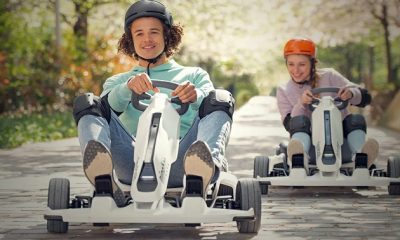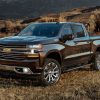Toys
Micro Machines: The Ins and Outs of RC Model Cars
Having a hobby to indulge in can be incredibly beneficial to individuals of all ages. It’s something that fulfils you, makes you happy and brings a sense of accomplishment. It’s no secret that hobbies can improve our mental well-being, reduce stress and even lead to new friendships. Whether you’re into more physical activities like skateboarding or prefer something more technical like remote control (RC) model cars, hobbies have a way of enhancing our lives in various ways.
The latter in particular has taken the world by storm recently due to its intricate designs and advanced technology. You don’t necessarily need to be an avid fan of cars to appreciate the intricacies behind these miniature machines and the potential they have for endless hours of fun.
What Are Hobby RC Cars?

In short, lifelike and detailed RC cars are miniaturized versions of real-life vehicles that feature incredibly detailed designs and high-performance capabilities. They’re available in a range of scale sizes, from 1/10th to 1/18th scale, and come in all types of models such as sports cars, monster trucks, drift cars and more.
The way the sizes work is that, for example, a 1/10th scale RC car is ten times smaller than the real version. Similarly, a 1/18th scale RC car is eighteen times smaller than its real-life counterpart. This allows for a more realistic driving experience as well as increased maneuverability and agility. In general, the most sought-after model is the 1/10th scale RC car, as it’s a perfect balance between size and performance.
Main Components of an RC Car

So what makes these small but mighty cars run? How do they take on real-world obstacles and race through challenging tracks? The answer lies in their main components, all of which work together to create a seamless driving experience. All of these parts can be customized and fine-tuned to cater to individual preferences, making RC car hobbyists constantly strive for better performance.
Transmitter and Receiver
The transmitter is the handheld controller that sends signals to the receiver on the RC car, controlling its speed and direction. It operates on specific frequency channels, allowing multiple cars to race without interference. The receiver then translates the signals and sends them to the different components of the vehicle to give it the desired speed and direction.
Depending on the sophistication of the model, the transmitter may have additional features such as throttle and steering adjustments, which can be useful for fine-tuning the car’s performance. If you need more control and precision, investing in a high-quality transmitter can make a significant difference.
Servos
Servos are small motors that operate within the RC car’s chassis and are responsible for controlling the steering and throttle. They acquire commands from the receiver and move accordingly to allow the car to turn and move forward or backward.
Different types of servos are available, offering varying degrees of torque and speed, so it’s essential to choose one that suits your driving style. For example, if you prefer racing on flat roads, you may want to opt for a servo with high speed and lower torque. On the other hand, if you’re into off-roading, a high-torque servo can help you navigate through obstacles more easily.
Motor or Engine
The heart of any RC model vehicle is its motor or engine. It’s the component responsible for powering the vehicle and giving it its speed and agility. RC cars typically come with electric motors, brushed or brushless, or nitro engines.
Electric models are powered by rechargeable batteries and offer instant torque, making them ideal for racing and drifting. Brushless varieties are more efficient than brushed ones as they have fewer moving parts, resulting in longer run times and less maintenance. On the other hand, nitro-powered RC cars use a mixture of fuel and air for combustion, giving them more power and speed. However, they require more maintenance and can be louder than electric models.
Battery or Fuel Tank
Based on the type of motor or engine your RC car has, it will require a power source. Electric models use rechargeable batteries that can vary in voltage and capacity, affecting the car’s speed and run time. It’s essential to invest in high-quality batteries to ensure optimal performance from your RC car.
On the flip side, nitro-powered vehicles require a fuel tank filled with nitromethane-based fuel, typically available at hobby stores. These tanks need to be refilled after every run, and the fuel mixture needs to be carefully monitored for optimal performance.
Chassis and Body
Finally, the chassis is the frame of the RC car that holds all the components together. It’s designed to withstand the high speeds and rough terrains these cars are driven on, making them sturdy yet lightweight. The body is the shell that gives the RC car its distinctive look, with designs inspired by real-life models such as Lamborghini, Ferraris, and more.
The exact materials used for the chassis and body can vary based on the model, with some using durable plastics or even carbon fibre for added strength and agility. You could go the extra mile and customize your car’s body with decals, paint jobs, or even 3D-printed parts to make it truly one-of-a-kind.
Writing for the blog since 2012, Chris simply loves the idea of providing people with useful info on business, technology, vehicles, industry, sports and travel – all subjects of his interest. Even though he sounds like quite the butch, he’d watch a chick flick occasionally if it makes the wife happy, and he’s a fan of skincare routines though you’d never have him admit that unless you compliment his impeccable skin complexion.

























